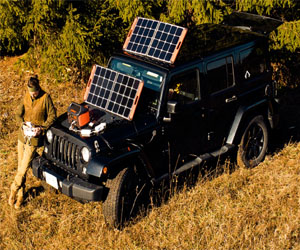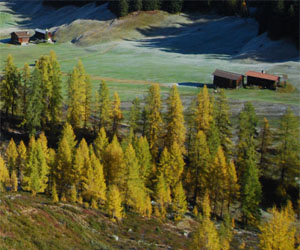


Keeping Your Garden Beautiful And Healthy

Weeds, those persistent and unwelcome intruders in your garden, can be a gardener's most frustrating challenge. However, effective weed management is essential to maintain the beauty and health of your outdoor space. In this article, we'll explore the importance of weed management and provide tips to keep those pesky plants in check.
The Impact Of Weeds: Weeds are more than just a cosmetic issue. They can compete with desirable plants for essential resources like sunlight, water, and nutrients. Left unmanaged, weeds can overtake your garden, causing harm to the plants you want to thrive. Weeds can also provide shelter and sustenance to garden pests, which can further disrupt the well-being of your garden.
Preventative Measures:
The first step in effective weed management is prevention. Here are some strategies to consider:
Mulching: Apply a layer of organic mulch to your garden beds. Mulch not only conserves soil moisture and regulates temperature but also suppresses weed growth by blocking out sunlight.
Landscape Fabric: Landscape fabric or weed barrier cloth can be placed under mulch to provide an extra layer of weed control. It allows water to pass through while inhibiting weed growth.
Plant Density: Plant your garden densely to create competition for sunlight and nutrients, leaving less room for weeds to take hold.
Regular Inspection: Routinely inspect your garden for early signs of weeds. It's much easier to deal with a few weeds when they're small than to tackle a full-blown infestation.
Manual Weed Removal:
When weeds do appear, one of the most effective ways to manage them is through manual removal. Here's how to do it:
Use The Right Tools: Invest in a good set of hand tools for weeding, including a hand trowel, weeder, and a sharp hoe.
Get To The Roots: When weeding, it's crucial to remove the entire plant, including the roots. Weeds left with their roots intact can quickly grow back.
Weed After Rain Or Irrigation: It's easier to remove weeds when the soil is moist. Weeding shortly after rain or watering can make the task less labor-intensive.
Proper Disposal: After weeding, make sure to dispose of the pulled weeds properly. Don't leave them in your garden, as some weeds can regrow from detached pieces.
Chemical Weed Control: While manual weed removal is the most environmentally friendly approach, there are situations where chemical weed control is necessary. If you decide to use herbicides, keep these principles in mind:
Selective Herbicides: Choose herbicides that target specific types of weeds while sparing your desired plants. Read labels carefully.
Follow Directions: Always follow the manufacturer's instructions for mixing, application, and safety precautions. Protective gear may be required.
Timing: Apply herbicides when weeds are actively growing, typically in the spring or early summer.
Weed Identification: It's crucial to accurately identify the weed species you're dealing with to select the appropriate herbicide.
Maintaining Vigilance: Weed management is an ongoing process. Regularly inspect your garden, pulling or treating weeds as needed. By staying vigilant, you can prevent weed infestations from taking over your garden.
Weed management is a fundamental aspect of gardening that requires a combination of prevention, manual effort, and, when necessary, the judicious use of chemicals. By effectively managing weeds, you can ensure that your garden remains beautiful, healthy, and a place of enjoyment for years to come.


Exploring The Benefits Of Solar Energy
 2. Reduced Electricity Bills
2. Reduced Electricity Bills
Solar panels allow homeowners and businesses to generate their electricity, which can lead to substantial cost savings on their electricity bills. By producing your electricity, you can significantly reduce or even eliminate your reliance on traditional utility providers.
3. Energy Independence
With solar panels on your roof or property, you gain a degree of energy independence. You are less reliant on the grid, which can be especially advantageous during power outages. Solar power systems, combined with energy storage solutions like batteries, can provide a consistent supply of electricity even when the sun isn't shining.
4. Increased Property Value
Homes and commercial properties equipped with solar panels often see an increase in their market value. Solar panels are viewed as attractive assets, and many potential buyers are willing to pay a premium for a property with solar installations.
5. Government Incentives
Many governments worldwide offer incentives, tax credits, and rebates to encourage the adoption of solar energy. These financial perks can make solar installations more accessible and affordable for homeowners and businesses.
6. Low Operating Costs
Once installed, solar panels have minimal operating and maintenance costs. Regular cleaning and occasional inspections are usually all that's needed to keep the system running efficiently. This low-maintenance feature makes solar energy a cost-effective long-term investment.
7. Job Creation
The solar energy industry is a significant source of job opportunities. The installation, maintenance, and manufacturing of solar panels contribute to the creation of numerous jobs, stimulating economic growth.
A Fundamental Right And Social Imperative
 One of the critical challenges in addressing affordable housing is the ever-increasing demand. As more people move to urban centers in search of better economic opportunities, housing markets become strained. Limited supply and increasing demand often result in skyrocketing housing prices, pushing the cost of living beyond the means of many.
One of the critical challenges in addressing affordable housing is the ever-increasing demand. As more people move to urban centers in search of better economic opportunities, housing markets become strained. Limited supply and increasing demand often result in skyrocketing housing prices, pushing the cost of living beyond the means of many.
The consequences of unaffordable housing are far-reaching. Families are forced to live in overcrowded and substandard conditions, leading to health issues and reduced quality of life. Homelessness becomes a tragic reality for some, further exacerbating social problems. Moreover, the lack of affordable housing can perpetuate cycles of poverty, as families are left with limited resources for education, healthcare, and other essential services.
Affordable housing solutions are not only vital for individuals and families; they also have broader social and economic implications. Access to affordable housing can improve community stability, enhance economic mobility, and reduce the burden on social welfare programs. By ensuring that everyone has a place to call home, we create the foundation for stronger, more inclusive societies.
Cleaning Your Way To A Sustainable Future
 Non-Toxic Products: Green cleaning relies on cleaning products that are free from harmful chemicals and synthetic fragrances. These products are safer for your health and the environment.
Non-Toxic Products: Green cleaning relies on cleaning products that are free from harmful chemicals and synthetic fragrances. These products are safer for your health and the environment.
Reduced Environmental Impact: Green cleaning minimizes the use of harsh chemicals that can contaminate water systems and contribute to pollution. It also promotes the use of eco-friendly cleaning tools and practices.
Clean Indoor Air: Green cleaning products and methods focus on improving indoor air quality by avoiding the release of volatile organic compounds (VOCs) commonly found in traditional cleaning products.
Effective Green Cleaning Techniques
Natural Cleaning Solutions: Utilize natural ingredients like white vinegar, baking soda, lemon juice, and essential oils to create your cleaning solutions. For example, a mixture of vinegar and water can serve as an excellent all-purpose cleaner.
Reusable Cleaning Tools: Invest in high-quality reusable cleaning tools, such as microfiber cloths and mop heads. These tools effectively capture and remove dirt, dust, and allergens, reducing the need for disposable cleaning supplies.
Reduced Plastic Waste: Opt for cleaning products and containers that are recyclable or refillable to reduce plastic waste. Single-use plastic bottles contribute to environmental pollution, and green cleaning encourages responsible consumption.
Energy-Efficient Appliances: Choose energy-efficient cleaning tools and appliances. For instance, energy-efficient vacuum cleaners and steam cleaners use less energy while providing effective cleaning.
Maximize Your Space And Minimize Clutter
 2. Wall-Mounted Shelves And Storage
2. Wall-Mounted Shelves And Storage
Utilize vertical space by installing wall-mounted shelves and storage units. These not only provide additional storage but also free up floor space, making your room feel more open and less cluttered.
3. Under-Bed Storage
Your bed can be more than just a place to sleep. Consider using the space underneath for storage. Under-bed drawers or bins are excellent for storing clothing, shoes, and other items you don't use daily.
4. Compact Kitchen Appliances
In a small kitchen, compact appliances can save valuable counter and cabinet space. Look for smaller refrigerators, slim dishwashers, and mini appliances that fit your needs without dominating your kitchen.
5. Fold-Down Tables
Fold-down tables are perfect for small dining areas or home offices. They can be easily stowed away when not in use, creating more room for everyday activities.
6. Pegboards And Hooks
Pegboards and hooks can be a game-changer for organizing and storing items like kitchen utensils, tools, or office supplies. These space-saving solutions keep your essentials within arm's reach without cluttering up drawers or countertops.
7. Magnetic Strips
In the kitchen, magnetic strips mounted on the wall can hold knives and metal spice containers, saving counter and drawer space. They're not only functional but also add a unique design element to your kitchen.
8. Over-The-Door Storage
Maximize closet and bathroom space by adding over-the-door organizers. These handy storage solutions can hold shoes, accessories, cleaning supplies, and more, making efficient use of often underutilized space.
The Advantages Of Raised Beds
 One of the primary benefits of raised beds is their superior drainage and soil aeration. Because the soil is elevated, excess water drains more efficiently, preventing waterlogged soil and root rot. This feature is especially valuable in regions with heavy rainfall or poor soil drainage. Additionally, the loose soil in raised beds allows for better aeration, promoting healthy root development.
One of the primary benefits of raised beds is their superior drainage and soil aeration. Because the soil is elevated, excess water drains more efficiently, preventing waterlogged soil and root rot. This feature is especially valuable in regions with heavy rainfall or poor soil drainage. Additionally, the loose soil in raised beds allows for better aeration, promoting healthy root development.
Improved Soil Quality
Gardeners have control over the composition of the soil in raised beds. You can customize the soil mix to meet the specific needs of your plants. This flexibility is especially advantageous if your natural soil is of poor quality. Gardeners often use a blend of topsoil, compost, and organic matter to create a rich, fertile growing medium in their raised beds.
Warmer Soil And Extended Growing Season
Raised beds are known for their ability to warm up earlier in the spring and stay warmer in the fall, effectively extending the growing season. The elevated structure allows the soil to absorb and retain heat more efficiently. This feature enables gardeners to start planting earlier and continue harvesting crops later into the year.
Ease Of Maintenance
Working in raised beds is generally more comfortable due to the raised height, which reduces the need for bending and kneeling. This is particularly beneficial for individuals with mobility issues or back problems. Additionally, the defined and structured layout of raised beds makes it easier to manage and maintain your garden.
Weed And Pest Control
Raised beds help in controlling weeds, as the defined garden space minimizes the area where weeds can grow. Gardeners can install weed barriers or mulch within the bed to further prevent weed growth. Additionally, the elevated structure can deter some ground-dwelling pests and make it more challenging for them to access your plants.
Protecting Our Planet Through Sustainable Practices
 Environmental benefits are critical for several reasons:
Environmental benefits are critical for several reasons:
Ecosystem Health: By reducing pollution, habitat destruction, and resource depletion, environmental benefits help maintain the health and diversity of ecosystems.
Climate Change Mitigation: Sustainable practices that reduce greenhouse gas emissions and promote carbon sequestration are essential for combating climate change.
Resource Conservation: Environmental benefits help protect and conserve vital resources like water, soil, and biodiversity.
Human Health: A cleaner environment means better air and water quality, which directly affects human health.
Strategies For Achieving Environmental Benefits
Numerous strategies and practices contribute to environmental benefits:
Renewable Energy: Transitioning to renewable energy sources like solar, wind, and hydropower reduces greenhouse gas emissions and lessens the environmental impact of energy production.
Waste Reduction: Reducing, reusing, and recycling materials minimizes waste and lowers the environmental footprint of resource extraction and disposal.
Building Sustainable Communities For A Better Future

Principles Of Eco-Villages:
Sustainability: Eco-villages are built on principles of sustainability. This encompasses eco-friendly housing, renewable energy sources, and a focus on reducing waste and energy consumption. Sustainable farming and food production are also key elements, with many eco-villages aiming to be self-sufficient in terms of food.
Low Environmental Impact: These communities strive to have a minimal impact on the environment. This often means eco-friendly construction, waste reduction and recycling, sustainable water management, and the use of renewable energy sources like solar panels or wind turbines.
Community And Connection: A strong sense of community is a hallmark of eco-villages. Residents often engage in decision-making processes together and foster a culture of shared responsibility. This sense of connection promotes social well-being and harmony.
Education And Learning: Many eco-villages emphasize learning and education, particularly in the areas of sustainability and eco-conscious practices. Workshops, seminars, and communal learning opportunities are common.
Cultural And Artistic Expression: Creativity and cultural expression often flourish in these communities, with residents embracing arts, music, and cultural activities that promote a sense of belonging and fulfillment.
Benefits Of Eco-Villages:
Environmental Stewardship: Eco-villages are on the forefront of environmental stewardship. By living in a sustainable, low-impact manner, residents reduce their ecological footprints and serve as models for sustainable living for the broader community.
Sustainable Living: These communities demonstrate that it is possible to live a comfortable and fulfilling life while minimizing environmental impact. They showcase the practicality of eco-conscious technologies and practices.
Strong Social Bonds: Eco-villages prioritize strong social bonds and a sense of community. Residents often share responsibilities, resources, and a commitment to a shared vision. This enhances the overall well-being of community members.